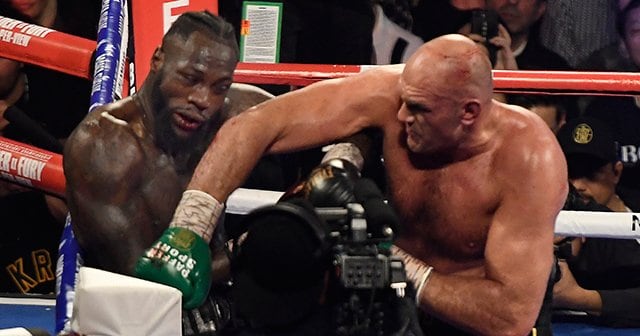
Kendo is more than just a sport or a martial art; through its deep training, you can learn many important life skills and values.
This article explores how Kendo develops qualities such as politeness, concentration, physical strength, perseverance, and leadership.
Starting Kendo means embarking on a journey that not only improves your technique, but also develops your mind and body at the same time.
So, let’s take a deep dive into Kendo, from its basics to its social value.
目次
- 1 Introduction: What is Kendo?
- 2 Etiquette – Kendo etiquette and its social value
- 3 Concentration – How to train your mind through training
- 4 Physical Fitness – Effects of Kendo on the Body
- 5 Perseverance – the ability to overcome challenges
- 6 Leadership – Dojo roles and teamwork
- 7 Summary and life lessons taught by Kendo
Introduction: What is Kendo?
Kendo is one of Japan’s traditional martial arts, and its origins date back to ancient samurai swordsmanship.
Literally translated as “the way of the sword,” it means more than just honing your sword skills.
Kendo is considered a lifelong learning path that emphasizes spiritual growth, ethical behavior, and harmony between mind and body.
This martial art is performed using a wooden sword (shinai) and competes against an opponent wearing armor.
Matches require precision, power, timing, and respect for your opponent, requiring not just physical strength but mental focus and self-discipline.
One of the reasons why Kendo is deeply rooted in Japanese culture is the spirit of “respect” that its training involves.
At the dojo, we show our respect and gratitude to each other by showing respect to each other before and after we begin training.
This is an important code of conduct not only in Kendo but also in Japanese society in general, and it has a great influence on people’s daily lives.
Kendo is not only about technique and strategy, but also about self-development.
Through repeated practice, you can learn about your own limits and acquire the strength to overcome them.
In this way, Kendo contributes to not only physical but also mental growth, making it more than just a sport for many people.

In Kendo, etiquette is at the core of its training, as symbolized by the phrase, “It begins and ends with courtesy.”
Kendo etiquette is more than just a formal greeting, it is an important element in promoting spiritual maturity and mutual respect.
Etiquette at practice and matches
Kendo training begins with a bow when entering the dojo.
This is an act of respect for the dojo and the training that takes place within it.
Before and after practice, you should never forget to bow to your teacher and practice partner.
During a match, bowing to your opponent and referee shows a fair spirit of competition and respect for your opponent.
Impact on civility in society
The etiquette learned in Kendo has a deep impact on your actions in daily life.
For example, by learning Kendo, you will acquire a sense of respect for others and the ability to read the atmosphere of a situation, which will be useful in all social situations, including school, work, and home.
The politeness cultivated through Kendo can become the basis for smoother communication and improving human relationships.
Kendo etiquette and self-discipline
Etiquette in Kendo is also closely related to self-discipline.
Consistent etiquette at every practice and game will improve your self-discipline, which will have a positive impact on other aspects of your life.
This kind of self-discipline, which one naturally acquires by continuing to practice Kendo, will also play an active role in one’s social life.
Kendo etiquette goes beyond formality and has a deep spirituality that can be directly applied to daily life.
These teachings are of value not only to those who study Kendo, but also to society at large.

Concentration – How to train your mind through training
Kendo is a great place to improve your concentration, and the concentration you gain through this martial art has a great impact on your daily life and other sports as well.
How to develop concentration in Kendo
In Kendo training, a moment of laxity can be fatal, so you must pay attention to each moment without losing concentration.
This type of environment provides a place for Kendo practitioners to learn how to achieve deep concentration.
Specifically, breathing techniques train you to calm your mind and focus on the present moment.
Also, by continually predicting your opponent’s movements, you maintain tension and maintain concentration.
Application in daily life
The concentration skills you develop through Kendo are useful in a variety of situations in your daily life, including schoolwork, work, and other sports.
For example, during meetings or exams, you can use the concentration skills trained in kendo to focus on the information you need without being distracted by distractions around you.
This enables efficient decision-making and high performance.
Impact on other sports
In the world of sports, concentration often determines victory or defeat.
Applying the concentration skills developed in Kendo to other sports will improve your judgment and reaction speed during play.
For example, in sports such as basketball and soccer that require rapid action, the instantaneous concentration and composure that Kendo training provides directly leads to accurate play under tense situations.
The training of concentration in Kendo is more than simply improving technique; it is an important training that allows people to maximize their abilities and utilize them in a variety of ways.
In this way, Kendo has the potential to have a positive impact on the overall lives of its participants.

Physical Fitness – Effects of Kendo on the Body
Kendo focuses on training the body as well as the mind, and training in this martial art greatly contributes to strengthening physical strength.
Kendo practice is a full-body workout that is effective for improving muscle strength, endurance, flexibility, and reflexes.
Kendo training method
The basic Kendo training method includes the following elements:
- Repetitive practice of basic skills : This includes footwork (footwork), thrusting, and striking techniques, which through repetition improves strength and endurance.
- Kata practice : This is done through Kendo Kata, where you learn muscle control through repetition of precise movements and increase body coordination and flexibility.
- Uchikomi : Practice hitting your opponent’s armor by repeating powerful blows over and over again to strengthen your upper body and core.
- Practice Match (Kumite) : This practice, which takes place in a real competitive format, helps develop explosive power and reflexes.
Specific effects of Kendo training
The specific effects of Kendo training on improving physical strength are wide-ranging:
- Improves muscle strength and muscle tolerance : Kendo practice specifically uses the lower body and core muscles, which improves overall strength and muscle tolerance.
- Strengthens your cardiopulmonary function : Repeated intense exercise strengthens your cardiopulmonary function, allowing you to efficiently deliver more oxygen to your body.
- Flexibility and body coordination : Practicing correct form and movement increases flexibility and achieves more harmonious body movements.
- Improved reaction speed : Competitive practice improves your reaction speed as you need to react quickly to your opponent’s movements.
Strengthening your physical strength through Kendo also contributes to improving the efficiency of your daily activities and performance in other sports, so you can feel its effects in many ways.
Kendo is thus a martial art that provides its practitioners with great benefits, not only physically but also mentally.

Perseverance – the ability to overcome challenges
Kendo tests patience through long periods of practice and tough matches, and this patience is a key element in a Kendo practitioner’s growth and success.
Situations that require patience
Kendo practice does not produce results overnight.
Learning basic movements, perfecting forms, and improving fighting techniques can take years.
Kendo matches are also extremely demanding both mentally and physically, requiring a high degree of concentration over a short period of time.
A high level of perseverance is essential to face these challenges.
How to develop patience
Some of the methods Kendo uses to develop patience include:
- Repetitive practice : By practicing the same technique over and over again, you will improve your technique and develop the patience to overcome failure.
- Practicing kata : By performing kata over and over again with the aim of perfecting a series of movements, your mental endurance and concentration will increase.
- Training to stay calm : Learn to stay calm under stress and pressure during practice, this increases your mental tolerance.
Impact of patience on daily life
The patience cultivated through Kendo is also valuable in daily life.
Perseverance is extremely important to keep you going when tackling challenges or long-term projects at school or at work.
It also provides a foundation for continuing to work towards personal goals and learning new skills.
Patience is more than simply waiting; Kendo cultivates it as the ability to actively face and overcome challenges.
In this way, Kendo not only teaches participants techniques, but also develops inner strength that enriches their lives.

Leadership – Dojo roles and teamwork
Kendo is an extremely effective activity for not only improving individual technique, but also for developing leadership skills.
Explore the division of roles in the dojo, the importance of teamwork, and how Kendo develops these skills.
Leadership role in the dojo
In kendo dojos, high-ranked or experienced swordsmen often take on leadership roles.
This includes instructing new students, conducting training sessions, and managing the dojo.
Through these activities, you will naturally develop the basic elements of leadership: responsibility, decisiveness, and influence.
Fostering teamwork
Team competition is an important element in Kendo, where the team’s strategy as a whole, as well as individual skills, determines the outcome.
In team competitions, cooperation and support between members is important, and kendo fosters coordination and communication skills within the team.
This gives Kendo practitioners the ability to collaborate with others and strive towards a common goal.
Application of leadership in society
The leadership skills you develop through Kendo will be of great use in your workplace and community activities.
The leadership and teamwork skills learned at the dojo are directly applied in a wide variety of situations, including project management, team leading, and decision-making processes.
The foresight, judgment, and ability to lead people that Kendo practitioners exhibit are valued qualities in a variety of environments.
In this way, Kendo is more than just physical training; it is also a place for participants to develop the important leadership skills needed in society.
Through this, Kendo has proven its worth in many areas.

Summary and life lessons taught by Kendo
Kendo is more than just an athletic activity, and the life lessons learned through its training greatly contribute to personal growth and success in society.
There are a wide variety of lessons that can be learned from Kendo, each of which is useful in different aspects of life.
Key life lessons you can learn from Kendo
- Courtesy and Respect : Kendo places great emphasis on courtesy, which teaches the importance of respecting others and acting appropriately.
- Patience and Persistence : Through long and rigorous training, you will develop the patience and persistence to continue striving toward your goals.
- Concentration and Concentration : Learn the ability to concentrate deeply on one thing, which will be beneficial in your studies, career, and other activities.
- Self-control and self-reflection : Cultivate an attitude of controlling one’s own actions and emotions and constantly striving for self-improvement.
- Physical fitness and health : Regular physical activity builds physical fitness that maintains health and improves quality of life.
- Leadership and Teamwork : Develop the skills to function effectively not only as a leader but also as part of a team.
The impact of Kendo on personal growth
These lessons learned through Kendo help individuals function in society in a more effective and harmonious manner.
Qualities such as self-control, respect, and patience help improve any relationship.
Additionally, leadership abilities and team collaboration skills not only lead to success in the workplace, but also increase effectiveness in a variety of philanthropic activities, such as community work and volunteering.
These lessons learned from Kendo will have a profound impact not only on your activities within the dojo, but also on your daily life, career, relationships, and pursuit of self-actualization.
In this way, Kendo offers its participants rich lessons that go beyond just physical training and encompass life in general.





